As the early morning sunlight filters through the towering bamboo stalks, casting a mesmerizing play of light and shadow, visitors to the Arashiyama Bamboo Grove in Kyoto are transported to a serene and ethereal world.
This is just one of the many enchanting experiences that await those who embark on a hike through Kyoto’s best tourist spots.
From ancient temples that exude an air of sacred tranquility to bustling streets that pulsate with life, this journey promises a captivating blend of history, culture, and natural beauty.
So, lace up your hiking boots and prepare to discover the hidden treasures that lie within Kyoto’s iconic landmarks, each waiting to unveil its own unique story.
Great News! You can reserve your spot for free with Viator. You can easliy cancel any time up to 1 day before without paying anything.
Quick Takeaways
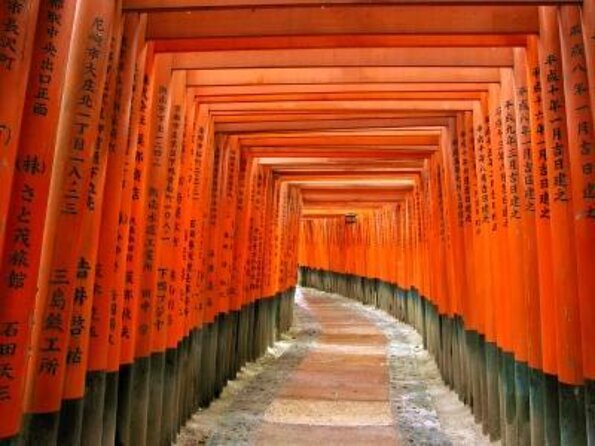
- Arashiyama Bamboo Grove offers stunning photography opportunities, especially during the cherry blossom season.
- Visit Kinkaku-ji Temple early in the morning to avoid crowds and fully appreciate its cultural significance.
- Fushimi Inari Taisha Shrine is a must-visit destination in Kyoto, symbolizing the journey of life and spiritual enlightenment.
- Explore the Gion District to experience the historic charm of Kyoto, witness geisha performances, and enjoy the vibrant nightlife.
Not for you? Here's a few more great tours and experiences nearby.
Arashiyama Bamboo Grove
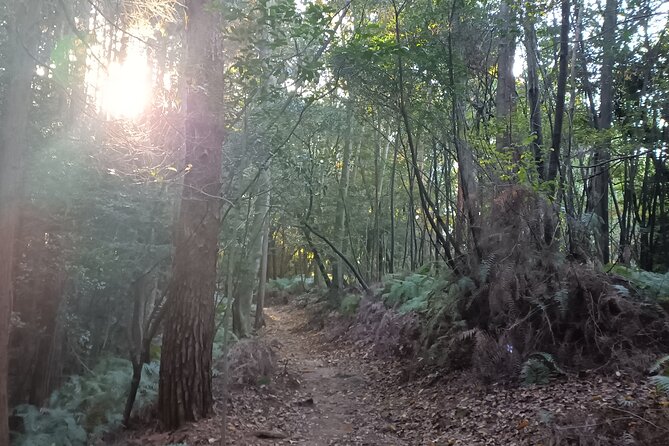
Arashiyama Bamboo Grove is a breathtaking natural wonder located in Kyoto, Japan. This enchanting bamboo forest is a photographer’s dream, offering countless opportunities to capture its ethereal beauty.
To get the best shots, it’s recommended to arrive early in the morning or late in the afternoon when the light is soft and golden. Utilizing a wide-angle lens can help capture the grandeur of the towering bamboo stalks, while playing with different angles and perspectives can add depth and interest to your photos. Plus, using a tripod can ensure sharp and steady shots.
As for the best times to visit for stunning views, spring and autumn are particularly magical. In spring, the cherry blossoms create a whimsical atmosphere, while autumn showcases a stunning display of vibrant colors as the leaves change. Don’t forget to visit during these seasons to witness the true splendor of Arashiyama Bamboo Grove.
Kinkaku-ji Temple (Golden Pavilion)
The Kinkaku-ji Temple, also known as the Golden Pavilion, is a captivating cultural landmark nestled in the heart of Kyoto, Japan. This iconic structure is a must-visit for travelers seeking an authentic Japanese experience.
To make the most of your visit, it’s recommended to go early in the morning to avoid the crowds and fully appreciate the tranquility of the temple.
The temple is easily accessible by public transportation, with buses being the most convenient option. Visitors can take bus numbers 12, 59, or 101 from Kyoto Station and get off at Kinkaku-ji Michi bus stop. From there, it’s just a short walk to the temple.
The Kinkaku-ji Temple is a sight to behold and shouldn’t be missed during your trip to Kyoto.
Fushimi Inari Taisha Shrine

Nestled amidst the rich cultural landscape of Kyoto, the Fushimi Inari Taisha Shrine beckons visitors with its vibrant torii gates and spiritual allure.
This ancient shrine holds great historical significance and plays a vital role in Japanese culture. The shrine’s history dates back to the 8th century when it was dedicated to the Shinto god Inari, the deity of rice, agriculture, and prosperity. Today, Fushimi Inari is renowned as the most important Inari shrine in Japan. It’s revered by locals and travelers alike, who come to pay their respects and seek blessings for success in business and personal endeavors.
The shrine’s distinctive feature is the seemingly endless path of over 10,000 vibrant red torii gates that wind their way up the sacred Mount Inari. This mesmerizing sight not only offers a unique photo opportunity but also symbolizes the journey of life and the path to spiritual enlightenment. As visitors hike through the gates, they’re immersed in an atmosphere of tranquility and mysticism, making Fushimi Inari an unforgettable experience and a must-visit destination in Kyoto.
Kiyomizu-dera Temple
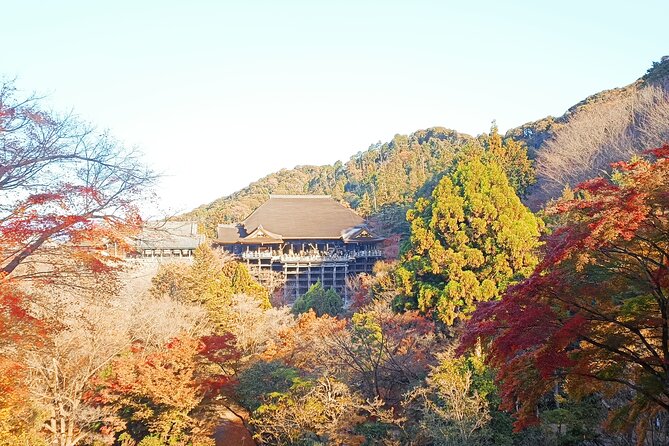
Kiyomizu-dera Temple, perched on a hillside overlooking Kyoto, is a renowned Buddhist temple that captivates visitors with its breathtaking views and rich cultural heritage. This historic temple holds great significance in Japanese history and is considered one of Kyoto’s most iconic landmarks.
Here are some key aspects of Kiyomizu-dera Temple:
- History and Significance: Kiyomizu-dera Temple was founded in 778 and has since been a symbol of devotion and spirituality. It played an important role in the spread of Buddhism in Japan and has survived numerous fires and wars throughout the centuries.
- Traditional Japanese Architecture and Design: The temple’s main hall, known as the Hondo, is a masterpiece of traditional Japanese architecture. It’s built without the use of any nails and stands on wooden stilts, offering a sense of elegance and beauty. The wooden veranda, jutting out from the main hall, provides visitors with stunning panoramic views of Kyoto.
- Sacred Waterfall: One of the highlights of Kiyomizu-dera Temple is the Otawa Waterfall. Visitors line up to drink from three different streams of water, each believed to grant a specific benefit – longevity, success in school, or finding love.
- Cultural Festivals: Kiyomizu-dera Temple is also known for its vibrant festivals, such as the Kiyomizu-dera Temple Autumn Illumination. During this time, the temple and its surroundings are beautifully lit up, creating a magical atmosphere.
Visiting Kiyomizu-dera Temple isn’t only a spiritual experience but also an opportunity to appreciate the beauty of traditional Japanese architecture and take in the rich cultural heritage of Kyoto.
Gion District
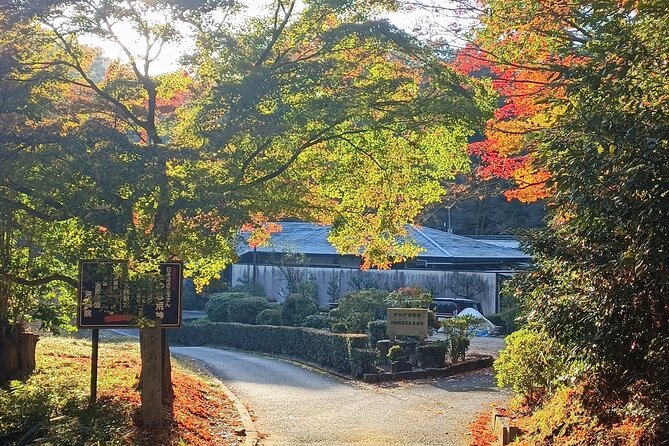
Located in the heart of Kyoto, the Gion District offers visitors a glimpse into the exquisite world of traditional Japanese culture and geisha heritage. This historic neighborhood is renowned for its preserved machiya houses, traditional teahouses, and charming streets lined with willow trees. Gion comes alive at night, becoming the center of Kyoto’s nightlife with its array of restaurants, bars, and theaters. One of the highlights of Gion is the chance to witness the artistry and elegance of geisha performances. Visitors can enjoy Kyoto’s traditional geisha culture by attending a tea ceremony or even booking a private dinner with a geisha. With its timeless beauty and vibrant atmosphere, the Gion District is a must-visit destination for anyone seeking an authentic Japanese experience.
| Kyoto’s Nightlife | Traditional Geisha Culture | Charming Streets |
|---|---|---|
| Vibrant and lively | Artistry and elegance | Willow-lined |
| Restaurants and bars | Tea ceremonies and performances | Preserved machiya houses |
| Theatres and entertainment | Private dinners with geisha | Authentic Japanese experience |
Table: Highlights of the Gion District in Kyoto.
Nijo Castle
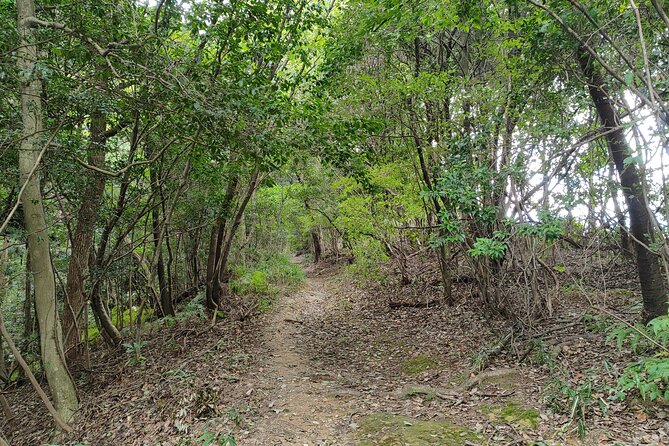
Nijo Castle, a UNESCO World Heritage Site, offers visitors a captivating glimpse into the rich history and architectural brilliance of Kyoto. This historic castle holds great significance as it was built in 1603 as the residence of the first shogun of the Edo Period, Tokugawa Ieyasu.
Here are some discussion ideas to explore the historical significance and architecture of Nijo Castle:
- Historical significance of Nijo Castle:
- It served as the seat of power for the Tokugawa shogunate.
- It witnessed important historical events, such as the transfer of power from the Ashikaga shogunate to the Tokugawa shogunate.
- It played a role in the unification of Japan under one ruler.
- Architecture and design of Nijo Castle:
- It showcases the unique architectural style of the Momoyama Period, characterized by its grandeur and opulence.
- The castle features beautiful gardens, imposing walls, and intricate carvings.
- The ‘nightingale floors’ are a unique feature that produce chirping sounds to alert against potential intruders.
- The castle’s buildings exhibit a blend of traditional Japanese design and Chinese influences.
Nijo Castle is a must-visit destination for history enthusiasts and architecture lovers alike, providing a fascinating insight into Japan’s past.
Philosopher’s Path
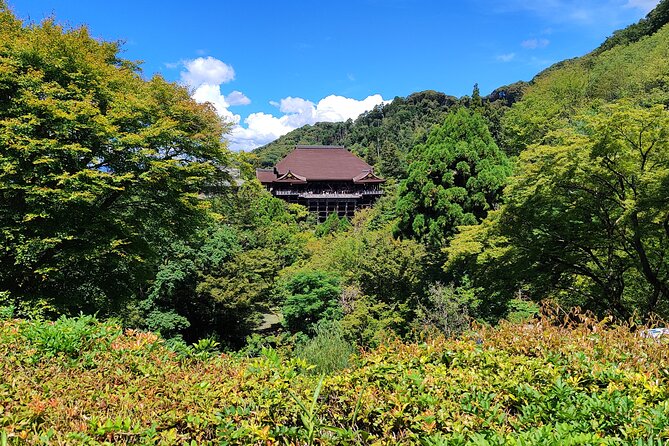
Continuing the exploration of Kyoto’s rich history and captivating attractions, another must-visit destination is the Philosopher’s Path. This picturesque stone path follows a canal lined with cherry trees, offering a breathtaking display of cherry blossoms in the spring. As visitors stroll along the path, they can enjoy the beauty of nature and reflect on the philosophical thoughts that inspired its name. Along the way, traditional tea houses dot the path, providing the perfect opportunity to take a break and experience the serene atmosphere of a traditional Japanese tea ceremony. These tea houses offer a glimpse into Japan’s tea culture, allowing visitors to savor the flavors of matcha tea while enjoying the tranquility of the surroundings. The combination of cherry blossoms and tea houses creates a truly enchanting experience for all who visit the Philosopher’s Path.
| Cherry Blossoms Along Philosopher’s Path | Traditional Tea Houses Along Philosopher’s Path |
|---|---|
| Breathtaking display of beauty | Serene atmosphere of a traditional tea ceremony |
| Symbol of spring and renewal | Glimpse into Japan’s tea culture |
| Stunning backdrop for photos | Savor the flavors of matcha tea |
| Reflect on the philosophical thoughts | Enjoy the tranquility of the surroundings |
Katsura Imperial Villa
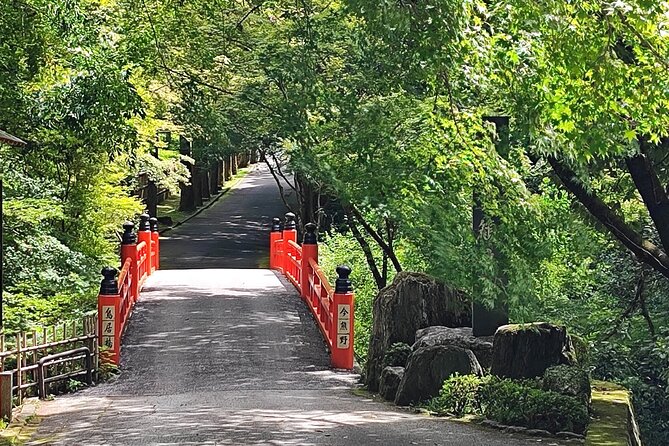
The Katsura Imperial Villa, a masterpiece of Japanese architecture, offers visitors a glimpse into the refined elegance and cultural heritage of Kyoto. This historical site holds great significance as it was originally built in the 17th century as a retreat for the Imperial Family. It showcases the traditional aesthetics and design principles of the time, reflecting the harmony between nature and human creation.
The architectural features of the Katsura Imperial Villa are truly remarkable. Its perfectly manicured gardens, meticulously crafted tea houses, and intricate wooden structures showcase the skill and craftsmanship of Japanese artisans. The use of natural materials like wood and stone, the delicate shoji screens, and the careful placement of windows to frame picturesque views all contribute to the timeless beauty and serenity of this architectural gem.
Frequently Asked Questions
How Long Does the Hike Through Kyoto’s Best Tourist Spots Tour Usually Last?
The average duration of the hike through Kyoto’s best tourist spots tour is around 4-6 hours. It offers a recommended itinerary that allows visitors to explore iconic landmarks and enjoy the city’s rich cultural heritage.
Are Entrance Fees to the Attractions Included in the Tour Price?
Yes, entrance fees to the attractions are included in the tour price. There are no discounts available for the entrance fees separately. Travelers can pay for the entire tour, including the entrance fees, in one payment.
Is Transportation Provided Between the Different Tourist Spots During the Tour?
Transportation is provided between the different tourist spots during the tour, ensuring convenience and efficiency. The tour duration allows ample time to explore each spot, making it a comprehensive and enjoyable experience.
Are There Any Age Restrictions or Physical Requirements for Participating in the Tour?
There are no age restrictions for participating in the tour, but it is recommended to have a moderate level of physical fitness due to the hiking involved. A certain level of mobility is required.
Can I Bring My Own Food and Drinks During the Tour?
Yes, you can bring your own food and drinks during the tour. This allows you to have a personal preference and enjoy your favorite snacks or beverages throughout the hike.
The Sum Up
To sum it up, a hike through Kyoto’s best tourist spots offers a truly unforgettable experience for travelers.
From the peaceful Arashiyama Bamboo Grove to the majestic Kinkaku-ji Temple and the vibrant Gion District, each location showcases the rich cultural heritage and natural beauty of Kyoto.
Exploring these iconic sites allows visitors to enjoy the history and charm of this enchanting city.
So lace up your walking shoes and embark on a memorable adventure through Kyoto’s best tourist spots.



